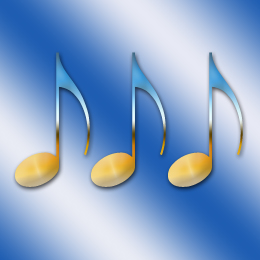
How to Write a Song in Three or Six

Did you ever notice that the majority of songs in our culture have a four-beat rhythm? This is referred to as Common Time, which translates into four beats per measure. And when songwriters in western cultures start thinking about how to write a song, it is usually the first, and often the only, time feel that comes to mind.
But this was not always the case. In certain earlier periods in history, three beat rhythms were the most popular. The waltz is a good example of what was once a very popular dance constructed from three beat rhythms. And there is an enormous amount of folk music from many cultures that is written in, what is technically termed, Triple Meter.
Click here to download your FREE songwriting e-book: “21 Ways to Write Better Songs”
The next time you find yourself asking how to write a song, consider that there is a large list of other styles from the past that are constructed from three beat rhythms: swing, country & western ballads, marches, circus music, minuets, scherzi, double jigs, polkas, sega, tarantella, barcarolles, loures, and the list goes on.
But that is not nearly as important as the fact that triple meter is alive and well, although underrepresented, in most forms of popular music today. Therefore, learning how to write a song in these time feels can open up huge doors of creativity for your songwriting.
But first let’s take a quick look at the difference between the two most common time signatures that use groups of three: 3/4 and 6/8.
In 3/4, there are three pulses per measure, each of which can be subdivided into two 8th notes (1 and 2 and 3 and) with a strong beat felt on the downbeat of 1 every measure. In 6/8 we have the opposite, there are two pulses per measure, each of which can be subdivided into three 8th note triplets (1 and a 2 and a), with the accented beat 1 being stronger then the accented beat on 2. Try counting these a few times and you will quickly begin to feel the difference.
To put it another way, in 3/4 time we feel a strong accent as the first of every three beats, (1 2 3 1 2 3) but in 6/8 time we feel a strong accent on beat one of the first group of three, and weaker accent on beat one of the next group of three (1 2 3 4 5 6), with beat four having a weaker accent than beat one. And 6/8 time can also be counted in twos as (1 and a 2 and a).
Another way to depict how to write a song in triple meter is that 3/4 would sound like 3 solid beats per measure (ONE and TWO and THREE and), while 6/8 would sound more like 2 solid beats (ONE-2-3-FOUR-5-6-). Try counting it this way.
And to really hear the difference between these two, I suggest listening to the song America from West Side Story, which is a quite bizarre, yet very famous song that alternates a measures of 6/8 and 3/4. It can be counted like (1 and a 2 and a; 1 and 2 and 3 and) with the lyrics “I like to be in America” counted as (6/8): I like to be in A – (3/4) me – ri – ca.
So what is the difference between the bottom note, the 4 or the 8, and how does that effect how to write a song? This is a technical point for music notation, a process which modern songwriters use infrequently, so for our purposes it is not that important. But for the curious, the 4 stands for quarter notes, and the 8 stands for eight notes, and it simply means that when notating 6/8 time we think of an eight note instead of a quarter note as what is counted as one beat.
Many of us songwriters get trapped inside four musical walls of 4/4 time and become blindfolded to the possibilities of different time feels. Let’s take those blindfolds off for a moment with an exercise about how to write a song in triple meter.
Exercise: Start writing a section of a new song with any kind of three feel, with chords and rhythm only. Don’t worry about which type of triple meter time feel you are precisely using, you can figure that out later. After you have established the triple feel, add a melody as a second and step. Next, set lyrics to the melody as a third step. Then build out the next song section, and continue in this manner until a rough draft of a song emerges.
And remember, when you experiment with how to write a song in new ways, you might have to do it a few times to gain mastery over the new language, but the new ability of how to write a song in triple meter will make it all worthwhile.
Below are some familiar songs that are based on different kinds of triple meter (groups of three, six, nine, or twelve). Please add to this list in the comments section; I can let you know which feel the song is in if you are not sure.
Songs in Three: 3/4
Manic Depression – Jimi Hendrix
My Favorite Things – Rodgers and Hammerstein (from “the Sound of Music”)
Songs in Six: 6/8
(6/8 can be felt as two groups of 3, the first group with a stronger accent: 1-and-a-2-and-a)
Breaking the Girl – Red Hot Chili Peppers
You’ve Got to Hide Your Love Away – the Beatles
Songs in Nine: 9/8
(9/8 can be felt as be felt as three groups of 3, the first group with a stronger accent: 1-and-a-2-and-a-3-and-a)
Morning Has Broken- Cat Stevens
‘Jesu Joy Of Man’s Desiring’ – J.S. Bach
Songs in Twelve: 12/8
(12/8 can be felt as be felt as four groups of 3, the first group with a stronger accent: 1-and-a-2-and-a-3-and-a-4-and-a)
Stormy Monday – Almond Brother’s version
Norwegian Wood – The Beatles
Schism – Tool (12/8 felt as a group of 7/8 + a group of 5/8)
Songs in Six: 6/4
(Felt as six beats with only one strong beat on 1)
Fell on Black Days – Soundgarden
Please add to this list above in the comments section below
Please Share, Like, and Re-tweet Below
Click here to download your FREE songwriting e-book: “21 Ways to Write Better Songs”
Save
The post How to Write a Song in Three or Six appeared first on Songwriting Planet.
Read more: songwritingplanet.com
